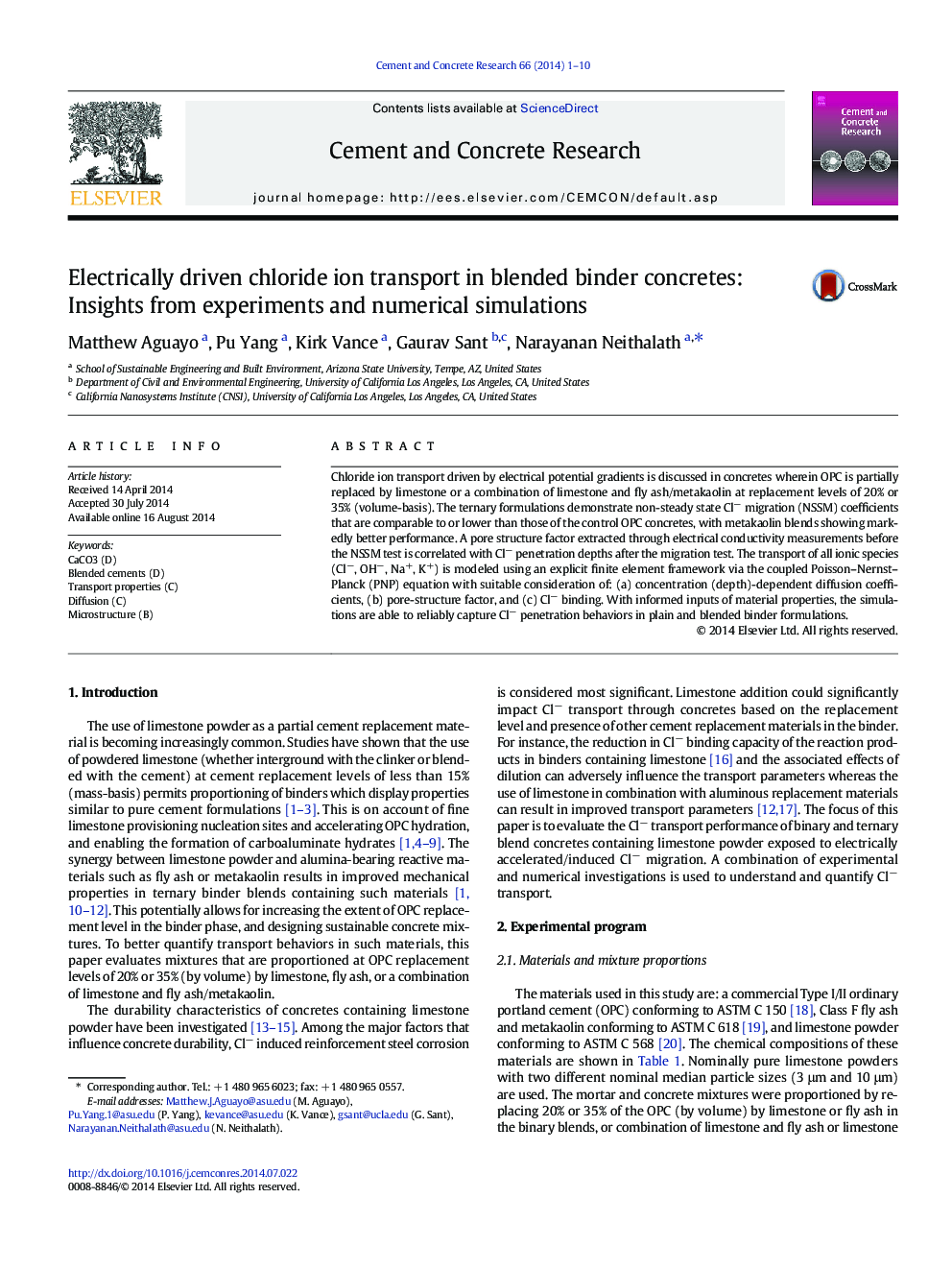| Article ID | Journal | Published Year | Pages | File Type |
|---|---|---|---|---|
| 1456270 | Cement and Concrete Research | 2014 | 10 Pages |
Chloride ion transport driven by electrical potential gradients is discussed in concretes wherein OPC is partially replaced by limestone or a combination of limestone and fly ash/metakaolin at replacement levels of 20% or 35% (volume-basis). The ternary formulations demonstrate non-steady state Cl− migration (NSSM) coefficients that are comparable to or lower than those of the control OPC concretes, with metakaolin blends showing markedly better performance. A pore structure factor extracted through electrical conductivity measurements before the NSSM test is correlated with Cl− penetration depths after the migration test. The transport of all ionic species (Cl−, OH−, Na+, K+) is modeled using an explicit finite element framework via the coupled Poisson–Nernst–Planck (PNP) equation with suitable consideration of: (a) concentration (depth)-dependent diffusion coefficients, (b) pore-structure factor, and (c) Cl− binding. With informed inputs of material properties, the simulations are able to reliably capture Cl− penetration behaviors in plain and blended binder formulations.
